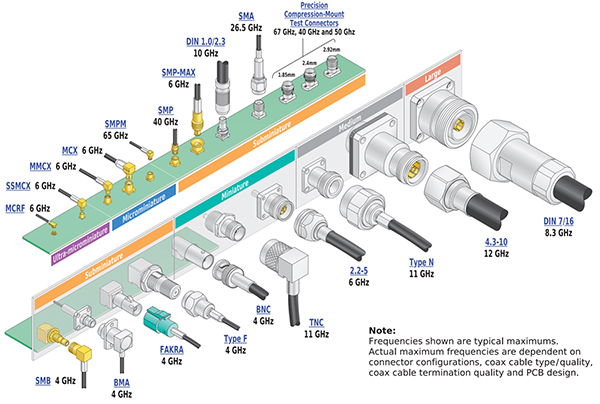[vc_row][vc_column][vc_single_image source=”featured_image” img_size=”full” alignment=”center”][vc_column_text]
Navigating IoT Technology Selection: A Deep Dive into Coverage and More
Have you been exploring our IoT insights? If you’ve taken the time to peruse our past blogs. Today, we’re unveiling the intricacies of choosing the right technology for your Internet of Things (IoT) project, with a spotlight on coverage.
Introduced by the 3GPP in Release 13 in 2016, LTE IoT technology, which encapsulates both eMTC (LTE-M) and NBIoT (Narrowband IoT), has set a new benchmark in IoT. These innovations, rooted in the robust LTE (Long-Term Evolution) networks, are shaping the future of connectivity.
The word on the street is that while LTE IoT is revolutionizing technology in Latin America, its coverage remains a puzzle. Some regions are fully equipped; others are still playing catch-up. It’s in this dynamic terrain that LoRaWAN emerges as a beacon, often chosen for its adaptability to current conditions.
Balancing Energy Efficiency with Connectivity
First, you need to understand low-power connectivity. While LoRaWAN is always recommended for energy conservation in theory, real-world applications sometimes tell a different tale. That is where LTE-M and NB-IoT enter the game—these not only promise optimal energy efficiency but also come loaded with benefits that are hard to ignore. However, they come with their unique set of challenges. The million-dollar question? Which one fits your blueprint best? The answer lies in meticulous groundwork, evaluating your project’s nuances against the backdrop of the ever-evolving tech environment.
Imagine investing in the state-of-the-art NB-IoT technology, only to discover your area doesn’t support it—frustrating, right? That’s why the GSMA Deployment Map, accessible here. For those considering cellular connectivity for the first time, this map is your compass, guiding where each technology thrives best.
Empower Your IoT Project with the Right Tools
Whether you’re scouting for modules or development kits, sell all available module information here or development kits depending to your needs here.
Exploring roaming options for your CATM or NB-IoT endeavors? The GSMA’s Roaming Options for Mobile IoT and this additional resource are like gold mines.
A Noteworthy Module Set for 2024 Releases the SARA-S520M10L – an LTE-M, NB-IoT, and satellite module amalgamated with the u-blox M10 GNSS receiver, crafted for multi-regional application. Also, you can check Visual Code Enhancement Tool: Waveform Render. Its functionality is depicted in the provided image.

So when talking about testing, for cellular technology with a data plan, the following link offers a solution, allowing you to ascertain the coverage and select the appropriate technology tailored for your project: He are some dev boards. You can further explore the boards and documentation Particle Documentation.
Sparkfun’s board is certainly intriguing, but there’s room for diversification. Check it out: Sparkfun Product.
If you’re designing your IoT device, many opt to incorporate the antenna directly into the PCB, but this approach can often be expensive. As a result, there might be occasions where you’ll need to attach an external antenna. If that’s the scenario you find yourself in, it’s crucial to be aware of the types of connectors your supplier offers. As you can see from the small image provided, there’s a range from the tiniest connectors to the most robust ones. Choosing the appropriate RF cable assembly can be difficult, given the need to account for factors like frequency compatibility, protective shielding, environmental influences, spatial limitations, and upkeep requirements.
LTE-M Overview
When discussing LTE-M, it’s crucial to highlight the higher data rates it offers. Specifically, the focus here is on LTE-M (Long-Term Evolution Machine Type Communication) and its sub-categories, LTE Cat M1 and LTE Cat M2.
LTE-M Standards: LTE-M is a communication technology crafted for IoT applications. It’s differentiated into two standards: LTE Cat M1 and LTE Cat M2, both delineated by 3GPP. LTE Cat M1, integrated in Release 13 in 2015, provides speeds of 1 Mbps for both uplink and downlink. Conversely, LTE Cat M2, introduced in Release 14 in 2017, provides approximately 7 Mbps uplink and 4 Mbps downlink speeds. Both support full-duplex and half-duplex communication modes.
Energy Efficiency: LTE-M’s reduced data rates excel in energy conservation, aspiring for a device operational lifespan of 10 years with a 5 Wh battery. Yet, hitting the peak transmission power of 23 dBm during uplink results in current surges around 500 mA, posing design challenges.
Enhanced Coverage: Compared to standard LTE, LTE-M provides superior coverage due to a higher “Maximum Coupling Loss” (MCL). This term refers to the juncture at which a wireless system loses its service capability. Consequently, LTE-M ensures better indoor connectivity, crucial for smart metering applications inside buildings, and extends its reach outdoors.
Mobile Data Support: Analogous to smartphones, LTE-M supports mobile data, enabling devices to continually connect to the nearest cellular tower—ideal for monitoring perishable goods in transit or other mobile applications.
Narrowband IoT (NB-IoT) Explained
NB-IoT: Primarily designed for static applications that don’t demand mobility, such as smart meters in agriculture or sensors in water treatment plants. Unlike LTE-M, NB-IoT doesn’t support cell tower switching or VoLTE.
Data Rates and Communication Mode: Data rates for NB-IoT are considerably slower than LTE-M. LTE Cat NB1 achieves up to 26 kbps downlink and 66 kbps uplink, while LTE Cat NB2 offers around 127 kbps downlink and 160 kbps uplink. Furthermore, NB-IoT solely operates in half-duplex mode. Although latency is higher, ranging from 1.6 to 10 seconds, it’s generally not a concern for static applications where immediate response isn’t pivotal.
Power-Saving Modes: Both LTE-M and NB-IoT incorporate various low-energy modes. One such is the “Power Saving Mode” (PSM), enabling the cellular radio module to enter a deep sleep state, leading to minimal power consumption over extended periods without data connectivity. Another is the “extended Discontinuous Reception” (eDRX), a lighter sleep mode that conserves energy over shorter intervals.
To conclude, while NB-IoT lags in speed and latency compared to other technologies, its low power consumption makes it suitable for applications not demanding swift communication.
Differences between LoRa and NB-IoT
LoRa: This technology grants developers significant control over transmission configurations via a “spreading factor” (SF). Higher bit rates, corresponding to shorter air time, are achievable with SF7, whereas SF12 offers the longest air time for the same byte amount. However, SF7 might reduce range and require repeat transmissions. Testing revealed that SF7 demanded only 100 mJ per transaction, in contrast to SF12’s 250 mJ. Thus, the choice of SF directly influences battery longevity, with SF7 being more energy-efficient.
Battery Lifespan: For a 3,000 mAh battery, LoRa utilizing SF7 can potentially power the setup for over 32 years. In contrast, employing SF12 would trim this down to nearly 13 years. Meanwhile, NB-IoT can offer almost two decades of operation. Nevertheless, in real-world scenarios, LoRa would need to adjust its SF and other transceiver settings to ensure successful data transfers, which might lead to unpredictable battery life variability.
LPWAN (Low-Power Wide Area Network)
While potent, LPWAN has its limitations. Design teams must meticulously evaluate the specific requirements of each use case when selecting a communication technology. The choice between LoRa, NB-IoT, and other solutions hinges on various factors, including energy efficiency, range, and the capabilities needed for a particular IoT application.
So after a detailed consideration, every technology offers something and adds value depending on the use case, you can try checking out Zephyr if you are interested in rapid product development.[/vc_column_text][/vc_column][/vc_row][vc_row][vc_column][/vc_column][/vc_row]



